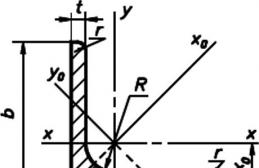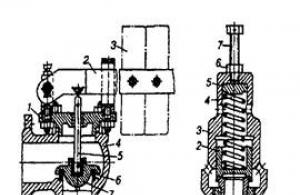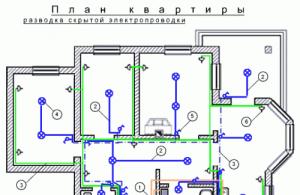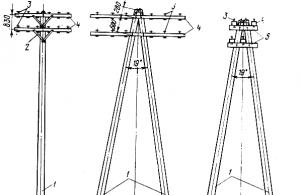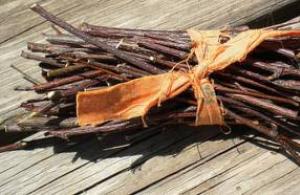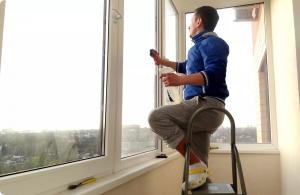I bought this wonderful device last year on eBay from the states.
I put it on the list and left safely for the entire season.
There were no complaints.
Just recently I went to the garage to start the engine after winter.
The engine ran on last year's gasoline, started up and I felt the warmth of the handles, but the control unit on the steering wheel showed no signs of life and did not respond to pressing the buttons.
This made me sad.
Reasoning that I would not receive any guarantee, I decided to disassemble the device myself to understand. what's the trick?
First I opened the block on the steering wheel. I didn’t find anything criminal there, but the quality of the wiring was disappointing, and the waterproofing was quite normal.
I was puzzled as to what the problem could be.
After thinking a little, I remembered that there was also a second block!
I had it under the right side cover under the saddle.
When I pulled it away from the Velcro, I felt that it was kind of warm.
Having opened it, I was not pleasantly surprised.
Firstly, it was about a quarter full of water and there were practically salt deposits on the walls.
Secondly, the contacts on the board have oxidized and even actually rusted in places. When I tried to pick off the oxide a little, the coating of the board with the tracks began to peel off from the printed base.
In general, this block died, which saddened me greatly.
After thinking about how this could happen, I realized what the fic was.
And so in order:
1) The second block, the central one, not the steering one, has almost no hydraulic protection. There seem to be rubber plugs where the wires enter the block, but they do not fit tightly enough and are not glued with anything like rubber glue, like on the steering wheel. As a result, water can penetrate through them.
2) Due to the fact that the length of the contacts on the battery from the central one to the block and from it to the steering block was quite limited, then I had to put it in exactly that place, as I remember, and since the wires came to it from above, I put it with the contacts facing up, because otherwise all the wires would be severely bent.
3) Before the season closed, I went to the car wash and washed the bike. Perhaps that's when the water flooded in. Although it may have rained a little during the season, because... At work the motz stood in the rain. Some kind of large mass was simply added to the sink, but at that moment it did not affect the work in any way, because... I arrived at the garage after washing and driving up the mountain, with the heating working properly.
Results:
1) I was left without heating, but I got used to it. Now I’m thinking which one to buy and where. The same ebay seller had a position imitated for 20 bucks. But delivery dropped by 10....
2) If I buy the same one again, I will glue these connectors and slots with rubber glue, which I advise everyone to do.
3) Perhaps I’ll try to change the installation location of the central unit, but it’s not a fact that the wires will allow it.
So I advise all buyers of this device to carefully choose the installation location of the central unit, and glue it in a circle, just in case, with rubber glue if the place is not very good.
ZY As if I’m not going for an Oxford, the fact that the central block turned out to be almost unprotected from water was of course very disappointing and spoiled the impressions.
Z.Z.Y. Sorry about the quality of the photos, but it’s like a cell phone in a not-so-light garage.
With this material we open a series devoted to various modifications to standard motorcycle systems. This is what many of us do in our free time. Some in their own garage, some in friends’ workshops. We polish the facings, screw on the arches and sliders, install xenons and diodes. And in defiance of winter, we decided to start with a conversation about how to make riding a motorcycle in cold weather more comfortable and enjoyable.
A healthy human body always tries to maintain a comfortable temperature. But if the wind actively cools the skin, then even at zero degrees you can freeze just as quickly as in a severe cold. Therefore, it is important to fight for temperature comfort in two directions simultaneously: protecting yourself from the wind and warming yourself up from the outside. To protect your hands from the wind, plastic covers mounted on the handlebars - such as on many enduro bikes - are excellent. However, the style of the motorcycle needs to be taken into account. On enduro or street, such parts will look harmonious, just choose the appropriate color and fastenings (reinforced with an aluminum strip, in addition, they perfectly resist falls and practically do not crack even in the cold).
Standard BMW touring protection
But you can’t put plastic on choppers and cruisers, so you’ll have to look for something more suitable, for example, transparent polycarbonate blades with chrome mounts. In Europe and the USA, warm steering wheel covers (Muff s) are popular. It's a worthy thing, but it hasn't caught on with us. There, the “muffs” along with the “apron” (like helmets) are quietly left on the motorcycle. We will most likely quickly add legs to them. However, if you plan to travel through winter Europe, you will definitely need them. Of course, the windshield flap also makes its contribution to wind protection - the larger it is, the better (of course, within the limits of reasonable windage).

Such warm handlebar muffs are very popular in Europe. And scooterists often use a waterproof and windproof apron in addition to them.

Such transparent poppers look good on a chopper
But no matter how much we protect ourselves from the wind, sooner or later the cold will take its toll. Heated steering wheel grips will help prevent freezing of your hands (or at least delay this moment). Together with protection and high-quality gloves, heating gives an amazing effect. You can safely move at zero (and even below) temperatures without fear of frostbite on your fingers. Although the cold aluminum of the levers, of course, is felt through the insulation layer. If desired, the lever can be made warm by covering it in heat-shrinkable cambric. You should not wrap metal with electrical tape: firstly, it will quickly wear out, and secondly, your finger will stop sliding and it will be more difficult to dose the force. Heated grips are produced by different companies, and the price range for them is wide. In addition, some people make their own heating for their motorcycles. Which option is yours? Let's figure it out. It’s quite easy to make a heating coil yourself from nichrome wire, a relay, a rheostat and other improvised means (insulating tape, aluminum tape, heat-shrinkable casing). We wrap a thermal insulator over the places where the handles are installed, and on top there are several turns of nichrome (some lay a heat-resistant thread between the turns so that they do not even accidentally touch). We connect the ends of the wire through a relay and a fuse to the battery; we connect the control through a toggle switch or rheostat to the ignition switch. The main problem here is not how to properly connect the heating element, but how to then put the handles on it. Most often you have to replace your original rubber bands with softer ones. It’s easier for chopper owners who can sew them from leather. Another difficulty is ensuring free rotation of the throttle.

Installation kit for heated grips

Set of heating elements. They can be used for handles (especially fixed ones, like on snowmobiles or ATVs) or sewn into the back of a seat (where there is little or no deformation).
The wire providing heating must be flexible enough and have reliable contact with the wire. A less creative, but also very affordable option is to buy universal earbuds. Such leaves cost no more than 800 rubles. for a couple. They are absolutely flat, and the original handles fit on them satisfactorily. However, the same problem as with the first option may occur. On snowmobiles and four-wheelers, the throttle handle does not rotate, so often the bushings do not have the flexible wire necessary for free rotation of the throttle. The most common, albeit most expensive, way to get a heated steering wheel is to purchase a ready-made set of grips (note that on modern motorcycles it is often part of the standard equipment, and when sold on the secondary market it practically does not affect the price - so you can simply find your own set) . The ease of installation and aesthetics will probably be worth the investment. But it is important to find the right set. After all, the diameters of motorcycle handlebars are different - 22 mm on most road bikes, while choppers often have a 25 mm thick handlebar. In contrast to the heated steering wheel, rare motorcycles can boast of a heater under the seat upholstery.

Motorcycle saddle heating kit
Therefore, those who do not drive in a stance in winter are also thinking about heating the butt. Here, the requirements for the strength of the heating element are higher, and there are fewer ready-made proposals. When selecting a heating element, you should also focus on its power: no less than 30 W and - without a regulator - no more than 60 W. Inexpensive car mats (for example, “Emelya”) have proven themselves well, but the saddle, of course, has to be reupholstered. Finally, perhaps the most effective, but expensive way is to use electrically heated clothing. It is produced by various companies (for example, Gerbing, Tourmaster) and in many versions. There are systems that include a full set of heated equipment: jacket, pants, boots, gloves and even vests and socks! The heat transfer of each element of modern equipment is regulated separately, and they are connected to each other by only one connector. Most sets are powered by 12 V, but there are also self-powered ones - from a built-in battery (though, as a rule, this is only one thing - a jacket, trousers or vest). In short, the scope for winter tuning is huge. The main thing is not to forget that the electrical load on the generator cannot be increased indefinitely. And we will talk about how to increase the power supply of a motorcycle electrical installation in one of the following issues.
When riding fast, especially in spring and autumn, the motorcyclist's hands freeze quite quickly. This has a very negative impact on the efficiency of using the control levers, and naturally, as a result, on traffic safety. Heated handles for a motorcycle, installed instead of standard ones, will successfully solve this problem.
Today, it is not difficult to purchase accessories that increase the comfort of riding a motorcycle in any weather. And installing and connecting such useful products with your own hands will also not be difficult and will take little time.
Thermal elements for motorcycle handles
The simplest and most economical way to make the handles of a motorcycle heated is to install electric thermocouples on them. The kit includes 2 plate covers with wires riveted to them, a switch, two heat shrink tubes and a small roll of electrical tape. Such sets from Chinese manufacturers (“LMoDri”, “Carprie”, “Sanborns”) with a heating temperature of 30÷50˚С depending on the power (10X2, 12X2 or 15X2 W) and switch device (2 or 3 positions) are now available 230÷690 rubles.

- We wrap thermoelements around the standard steering wheel handles.
- We secure them with the electrical tape included in the package.
- We put heat-shrinkable tubes over the installed pads.
- We warm it with a hairdryer.

- We attach the switch in a convenient place (for example, to the left mirror mounting bolt).
- We secure the wires from the heaters and the switch to the steering wheel using plastic clamps.
- We connect the red wire to the positive of the battery, and the black wire to the negative.
- Turn on the switch and check the operation of the heaters.
Important! After installing the right heater, it is necessary to leave a loop of the connecting wire to ensure free movement of the throttle handle. If, after releasing, the handle does not return to its original position, the wires need to be corrected, and only then secure the wiring.
Low power products (10X2 W) can be installed on mopeds and scooters.
For those who fundamentally do not want to change the appearance of their bike, we advise you to purchase similar products from Heat Demon. The set (power 20X2 W, with a three-position switch) costs 3000÷3500 rubles. The fundamental feature of these devices is the presence of durable and thin self-adhesive thermoelements. Installation Features:
- Carefully remove the standard rubber handle linings.
- We clean and degrease the places where they are attached.
- We attach self-adhesive thermoelements to the steering wheel.
- We install the standard handle covers in place.
For Harley-Davidson owners, the Heat Demon company has specially developed a set of metallized thermoelements that are inserted inside the handlebar tube. However, the cost of such a kit with a 4-position temperature controller and a power of 20X2 W is 15200÷18500 rubles.

Types of heated grips for motorcycles
Ready-made handles with built-in heating for motorcycles are very widely represented on the modern market of such useful accessories. The price range for these products is quite large: from 600÷1500 rubles (“Spirit Beast”, “Xmt-moto-car”, “Wupp”) to 4200÷6700 rubles (“Oxford”, “Daytona”, “Vicma”), and for top Avon models up to 20,000 rubles per set. The color range of the products will satisfy any, even the most demanding, motorcycle owner: strict black, shiny chrome or with bright colored inserts.

The design of the controls is also very diverse: from a simple switch with 2 positions (On/Off) to an electronic waterproof switch with 4–5 positions. Some models have a built-in voltmeter to monitor battery voltage and a USB output (+5V).

Some models have an automatic shutdown system when the battery voltage drops to 10.5V. Proven and popular manufacturers complete their products with silicone wires, which retain good flexibility even at very low temperatures. Sometimes the kit includes a switching relay (although most manufacturers neglect such a useful detail).
Installing heated grips on a motorcycle handlebar
Although different models from different manufacturers have their own design features, installing heated grips on a motorcycle is practically no different:
- We dismantle the standard handles. If we want to keep them safe and sound, we will have to tinker, using a WD-40 “liquid wrench”, narrow long screwdrivers or other devices. If you finally decide not to return to installing the old handles, then simply cut the rubber pads with a construction knife.

- We clean the seats from residual glue and rust. This must be done especially carefully with the plastic insert of the gas handle. On some bike models, you will have to cut off the stops on the outside of the plastic bushing.
- We try on the new products on the steering wheel so that the protruding wire clamps do not interfere with fully squeezing the clutch handle and brake lever.

- To ensure free movement of the throttle stick, we leave a loop of the connecting wire, and the wire itself is temporarily secured to the steering wheel with electrical tape. If the handle does not return to its original position after being released or there is no play, then it is necessary to adjust its position on the steering wheel again.
On a note! If your pit bike, cross bike, enduro or ATV has a short-throw throttle handle, then the wire loop can be made much smaller.
- Having achieved that the accelerator handle quickly returns to its original position and does not jam, we fix the handles with glue.
Important! Adjustment of the position of the handles must be done very carefully so that you do not have to dismantle the finally fixed products.
- On the left side, in the area of the side mirror, we attach a switch or control panel (depending on the model).

- We secure the wires to the steering wheel using plastic ties.
- We drag the necessary wires to the battery compartment and connect the device in accordance with the diagram and manufacturer’s recommendations.
Connection diagram via relay
Technically, it is most correct to connect “warm” handles through a relay. If you forget to turn off the heated grips in the parking lot, then by morning your battery will be dead and you will not be able to start your motorcycle. And even if your device is equipped with an automatic device that is responsible for disconnecting the products from the battery (when the voltage drops to 10.5V), then this voltage may simply not be enough to successfully start the engine. In order not to return home and charge the battery, it is better to initially connect the heating device via a relay. It is necessary to additionally purchase a 4-pin VAZ starter relay (marking “90.3747-10”, cost 80÷90 rubles) and an adapter block with wires (50÷60 rubles).

Below, as an example, we present the connection diagram for the Oxford Premium kit (although it can easily be applied to all other models):

The scheme is very simple. Difficulties can only arise with connecting relay contact No. 86, which should receive +12V voltage when the ignition is turned on. The easiest way: open the cover of the fuse box and find the wire going to the “Signal” (or as it is also called “Klaxon”) and connect the wire from the 86th contact of the relay to it.

You can use a multimeter to find the right terminal. With the ignition off, measure the voltage on all available contacts. Those points where +12V is present are not suitable for us. Turn on the ignition (it is not necessary to start the engine) and check the voltage at the remaining fuses. In the place where the voltage appears when the ignition is on and disappears when it is turned off, it is quite suitable for connecting a relay (legs No. 86). We mount the relay near the battery compartment in a convenient place, but so that it does not interfere with removing or installing the battery.

Now our heating will work only when the motorcycle is started, which will ensure the safety of the battery, even if you forget to turn off the heating.
In custody
The final choice of a device for warming handles depends only on your financial capabilities and personal preferences. In any case, regardless of whether you purchased handlebar grips for your motorcycle from a well-known brand or a cheap Chinese manufacturer, riding comfort in inclement weather will increase significantly.
/ 67
Details Not installed on all snowmobiles. At the same time, they are a pleasant and necessary option on any snowmobile and many motorcycles. Of course, you know that there are ready-made heated handles that are installed instead of regular handles. The cost of such kits is usually very high, and maintainability is low due to the fact that the heating elements are embedded in the rubber of the handles. Let's consider a budget option that heats no worse than famous brands and can be easily repaired if necessary.
After removing the handles from the steering wheel, evaluate their elasticity. If they are made of rough material and do not stretch well, then the paint should be removed from the steering tube where the handles fit. The installed heating plates compensate for the removed layer of paint, and the rubber handles easily slide into place. Try not to leave deep nicks on the metal - the heating plates adhere well to a smooth surface. The handles of the old style from the Buran snowmobile are very elastic. Due to their elasticity, they are easy to install, regardless of whether the paint has been removed from the steering wheel or not. According to the mounting diameter, these handles are interchangeable with the steering handles from the Taiga snowmobile

If a decorative cover is not installed on top of the steering wheel, such as on the Taiga or Yamaha Viking snowmobiles, then before installing the heaters, you should consider the location of the wires coming from them. Wires should not interfere with controls, such as the throttle trigger, and should be protected. Understand that the wires laid along the front of the steering wheel (farthest from the driver) are quickly torn off by oncoming blows from branches.
Select one of the wire routing methods:
- Route the power wires in the additional casing, on the sides of the steering wheel facing the driver.
- Arrange a protective casing over the steering tube, for example, from a corrugated hose of a suitable size. If there is no strap on the handlebars, and during active driving you hold the steering wheel in different places, the additional cover will not be convenient. In other cases, the casing does not interfere.
- Route the power wires inside the steering wheel tube and bring them out in the middle part of the steering wheel, where the steering wheel is attached to the steering column. A couple of small-diameter holes have no effect on the stiffness of the steering wheel. There will be a slight difficulty in “fishing out” the wires at the point where they exit the steering tube. At the inlet and outlet of the wires through the steering tube, use protection for the wires from abrasion on the edges of the holes. You can use special rubber bands from something, or pass the wires through pieces of cambric inserted into the holes. Or use a hot glue gun and pour glue into the holes, preventing the wires from moving and touching the edges. When using this method, drill the place for inserting the wires into the steering wheel tube so that the rubber handles cover the holes. The location where the wires exit the steering wheel tube is selected depending on the design of the steering wheel mounting and its elevation angle. This method provides reliable protection for power wires, preserves the aesthetic appearance of the steering wheel, and the wires do not interfere with the controls.

If necessary, degrease the pipe where the heaters are installed. Remove the paper backing of the heating element covering the adhesive layer. Glue the plate to the steering tube, smoothing it from the middle to the edges. If the edges of the plate peel off, you can use tape to fix the edges



Having finished with the stage of gluing the heaters of the steering handles, install the rubber handles in place. The article describes how to put handles on the steering wheel. If you don’t have enough hand strength, then you can hammer the handles by hitting the end of the handles with a mallet, while simultaneously pulling the handle with your hand. Carefully ensure that the edges of the heating element fit under the rubber without bending.

In cases where the paint has not been removed from the steering wheel and the handles do not settle on the steering wheel, you can try to increase the elasticity of the rubber. To do this, before installation, hold the rubber handles in boiling water for about a minute. Heated rubber is more elastic. It is not advisable to overheat the rubber.
Having put the handles in place, again check the functionality of the handle heaters by applying 12V voltage, for example, from a battery. If everything is done correctly, then the handles should warm up. After several warm-ups, the soap solution will dry. Once you are sure that everything is working, put the steering wheel back in place and proceed with the permanent connection.
Connecting heated grips is not difficult. Each heating element has two wires that have no polarity. The wires can be connected in any order to plus and minus, to a DC or AC voltage source after the voltage stabilizer (you cannot connect heating directly from the Magdino wires, bypassing the voltage regulator). After choosing a connection location in the snowmobile wiring, be sure to measure the output voltage at different engine speeds. It is recommended to install several connectors on the power wires - in case the steering column or steering wheel needs to be removed during repair work. The contacts must be of good quality, otherwise they will quickly burn out under load.
Connection methods for heated grips:
Without On/Off toggle switch, directly, at 100% power. The heaters will always work when the engine is running;
At 100% power using the On/Off switch. The heated steering wheel can be turned off and on as needed;
At 50 or 100% power, through a toggle switch with built-in resistance and On/Off/On modes. This toggle switch allows you to turn on the heated steering wheel grips at 50 or 100% power. The connection is made according to the diagram

If, when installing a heated steering wheel, a heated throttle trigger is also installed, then it can be connected to the general circuit at a constant power of 100%.
Upon completion of work, start the engine, turn on heated handles

